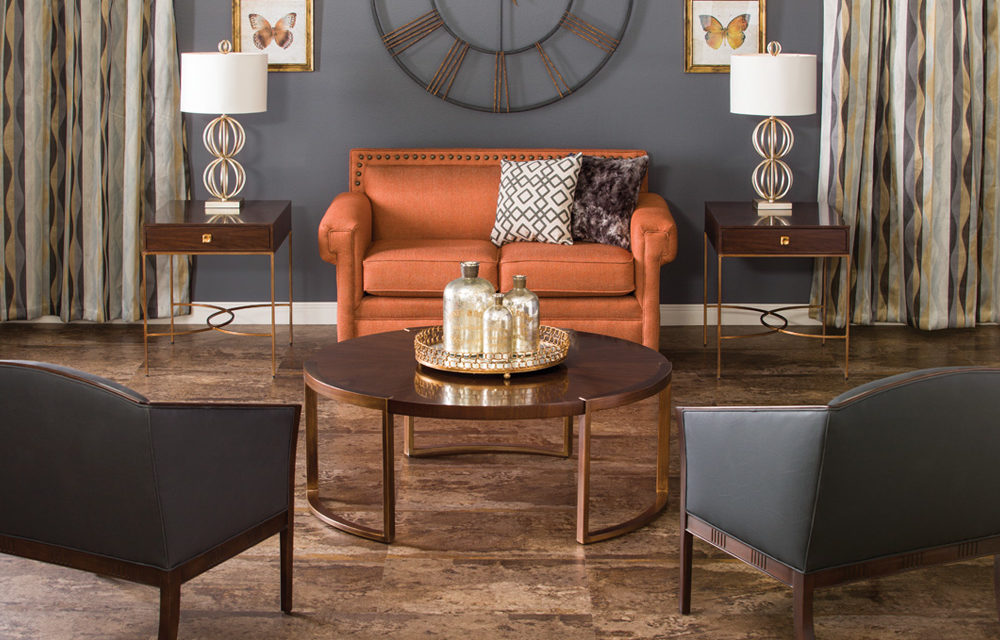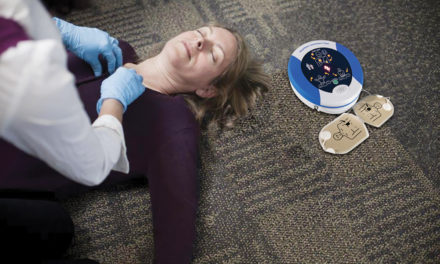When it comes to designing for seniors, it’s important to keep in mind a few key considerations to help ensure your designs meet the demands of Senior Living. Here are our tips and tricks for designing spaces for seniors with reduced eyesight.
1. Reduce glare
Avoid glass-top tables and reflective flooring as these can contribute to eye strain. In glary conditions, the eyes have to constantly adapt to the difference between dark and light areas, resulting in eye fatigue, headaches and reduced visibility. Instead of using glass side tables, consider occasional tables with a natural wood look that reduces glare, like the Livingston Collection.

2. Delineate furnishings
Give visual cues to help aging eyes distinguish furniture and windows. Consider adding window treatments that stand out from the wall to define windows, or include contrasting cording, piping or nailhead detail – like on the Maxwell Thomas Vidalia Collection – to outline furniture.

3. Color contrast
Monochromatic color palettes can make it difficult to see where one surface ends and the next begins. Help differentiate between major pieces of furniture, walls, drapes and floors with clear color contrast. This approach is also helpful for different pieces of bedding. Check out bedding in an array of colors for your space.
4. Color palette
Blue and green tones are particularly difficult for aging eyes to distinguish. Consider using warm reds and golds, which are much easier to see. In addition, large-scale patterns are great for seniors – small patterns aren’t ideal for aging eyes because they can start vibrating or make the resident dizzy. Check out pasilla crimson, one of the new Maxwell Thomas fabrics, for a large-scale pattern with a warm color palette.

5. Task lighting
Seniors require more light to see clearly, but are also much more sensitive to glare. Reduce eyestrain by ensuring there is suitable task lighting for activities like games, crafts or reading. Find an array of table lamps for every space and activity.

6. Bold accents
Choose bright accessories and artwork with crisp imagery instead of dull or soft colors, which can be harder for seniors to see. Using a combination of materials and colors can help aging eyes better distinguish the environment. Discover a full selection of bright and engaging artwork.

7. Natural light
Select window treatments that foster ample natural light. Not only does natural light provide improved visibility, it can also have a positive impact on sleep cycles and mood. Sunrooms are a great place for residents to enjoy natural light year-round. Find the ideal sunroom furniture for your design.
To start your next Senior Living design project, contact us today. For more Senior Living insights, check out tips on designing Memory Care spaces.




